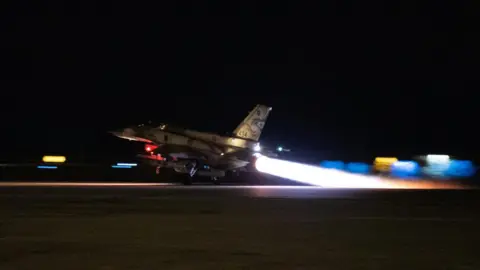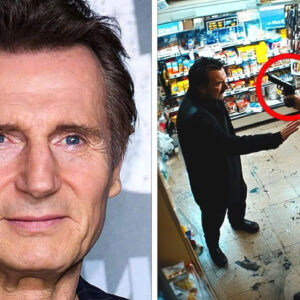
Intensifying Conflict: Israel’s Air Strikes on Hezbollah Targets
An Israeli fighter jet recently took off to conduct strikes on Hezbollah targets in southern Lebanon, marking a significant escalation in the ongoing conflict. Israel has conducted extensive airstrikes, reportedly targeting over 100 Hezbollah rocket launchers and various other “terrorist sites,” including a crucial weapons storage facility. The Israel Defense Forces (IDF) stated that the launchers targeted were prepared to fire against Israeli territories, although it remains unclear whether these operations resulted in any casualties.
On Thursday evening, Lebanon’s state-run National News Agency reported that Israel had carried out at least 52 strikes across the southern region of the country. Meanwhile, Hezbollah responded by launching strikes on military installations in northern Israel. The Israeli airstrikes, which lasted for over two hours, were among the most intense seen during this recent wave of conflict.
Impact of Recent Strikes
Footage captured moments of explosion and devastation across Lebanon, highlighting the dire humanitarian impact of the conflict. The airstrikes have caused significant concern for civilians, and early reports indicate that they might have exacerbated the already strained medical facilities in Lebanon. On Friday morning, the IDF lifted previous restrictions on movement for communities in the Golan Heights and parts of northern Israel, indicating a possible shift in military operations. However, the military warned that residents should remain vigilant, as “gunshots and explosions” would likely be heard during ongoing training exercises in northern Israel over the weekend.
Earlier, Hezbollah’s leader, Hassan Nasrallah, expressed grave concerns regarding the situation. He claimed that the recent explosions “crossed all red lines,” accusing Israel of committing acts that he described as declarations of war. While Israel has not confirmed responsibility for the explosions that killed 37 people and injured around 3,000 in Lebanon, it remains evident that the conflict is escalating rapidly.
Medical Crisis in Lebanon
The humanitarian situation is becoming increasingly critical, as the medical center in Beirut reported receiving a “tsunami of patients” following the explosions. Chief nursing officer Hisham Bawadi shared that many of the injuries sustained were facial, particularly affecting the eyes and upper extremities, alongside some abdominal injuries. To manage the influx of casualties, the medical center has planned several surgeries over the weekend.
Interestingly, the devices responsible for the recent explosions—pager devices manufactured by companies in Taiwan and Hungary—have come under scrutiny. Both firms have denied involvement, with the Taiwanese government asserting that the components used in the pagers were not sourced from Taiwan. Bulgaria’s state security agency also stated that the pagers linked to the incidents were neither imported nor exported from Bulgaria, further complicating the narrative surrounding the explosions.
Ongoing Military Actions
As tensions continue to rise, Israel remains focused on its military objectives against Hezbollah, which it views as a significant threat. In a statement, the IDF emphasized that its warplanes struck approximately 100 launchers and additional infrastructure used by Hezbollah, indicating a preemptive approach to eliminate immediate threats to Israel’s security. The IDF reiterated its commitment to degrading Hezbollah’s capabilities and infrastructure to safeguard the state of Israel.
The situation remains precarious, with residents in northern Israel advised to avoid large gatherings and stay close to bomb shelters as the IDF continues its operations. Hezbollah, for its part, has retaliated by firing anti-tank missiles and drones across the border, resulting in casualties among Israeli soldiers.
Diplomatic Efforts and Future Prospects
In a televised address, Hassan Nasrallah characterized the recent Israeli actions as a “major aggression” against Lebanon, denouncing them as war crimes. He acknowledged the significant damage inflicted upon Hezbollah but remained defiant, asserting that the group’s operational capabilities and communication remain intact. Nasrallah insisted that Hezbollah’s cross-border attacks would persist unless a ceasefire in Gaza is achieved.
Israeli Defense Minister Yoav Gallant has indicated that the IDF is entering a “new phase of the war,” which presents both opportunities and risks. He stated, “As time goes by, Hezbollah will pay an increasing price.” However, the specifics of Israel’s military strategy remain unclear, though there have been discussions about establishing a buffer zone inside southern Lebanon, which could lead to further military action.
Internationally, there have been calls for restraint from prominent figures such as U.S. Secretary of State Antony Blinken, who expressed concerns about escalatory actions complicating efforts for a ceasefire in Gaza. UK Foreign Secretary David Lammy echoed these sentiments, advocating for an immediate ceasefire and a negotiated political settlement to allow displaced Israelis and Lebanese to return to their homes safely.
Conclusion
The conflict between Israel and Hezbollah continues to escalate, with significant implications for the broader region. As both sides prepare for further military actions, the humanitarian situation grows increasingly dire. The international community remains watchful, hoping for a resolution that seems increasingly elusive as the cycle of violence continues.





